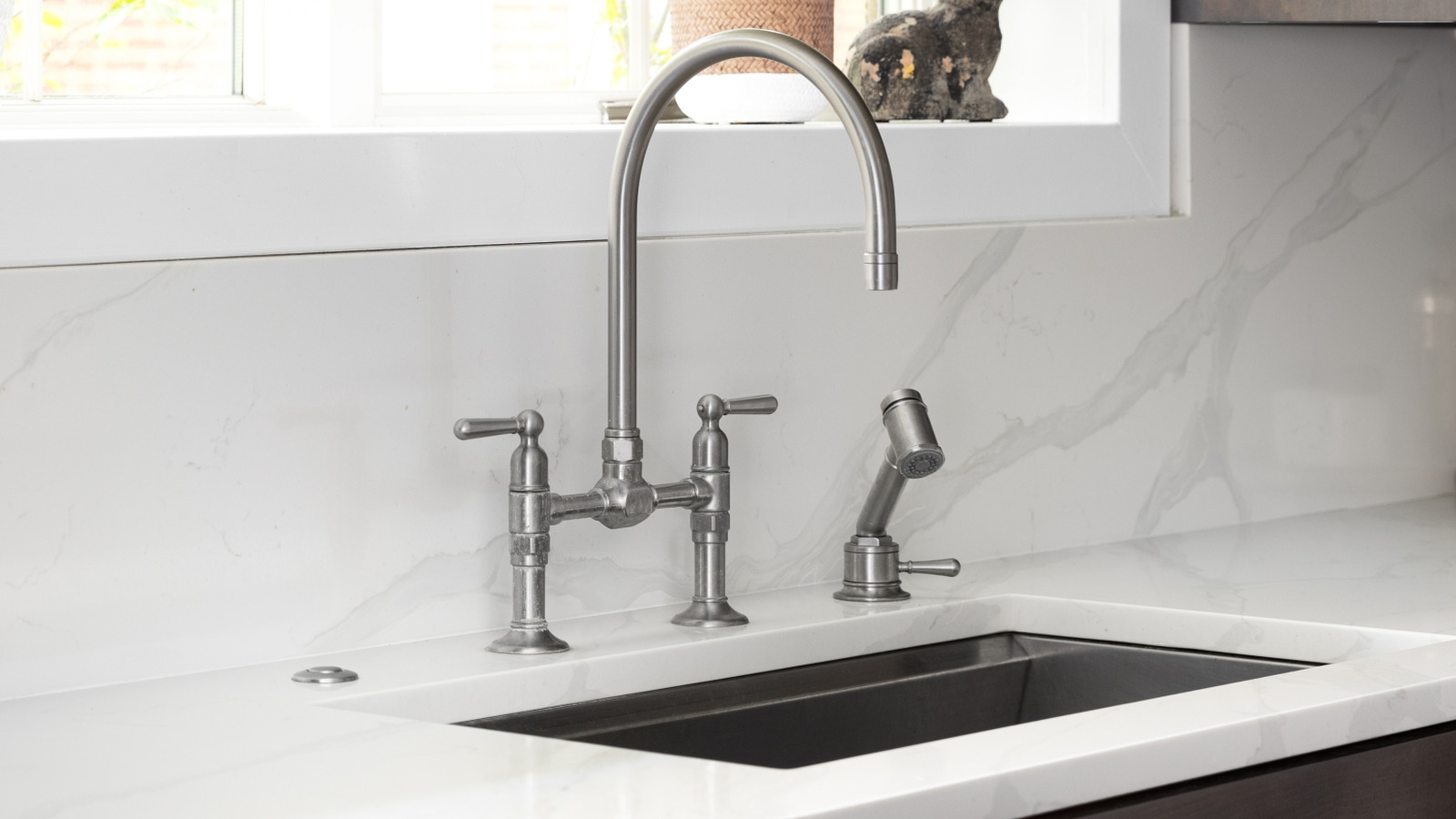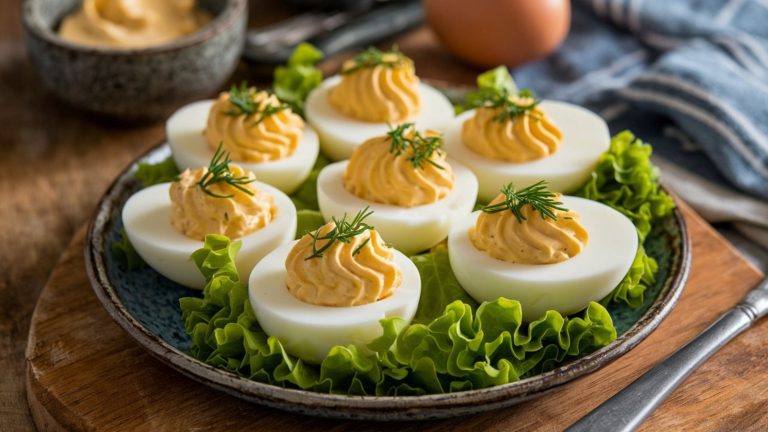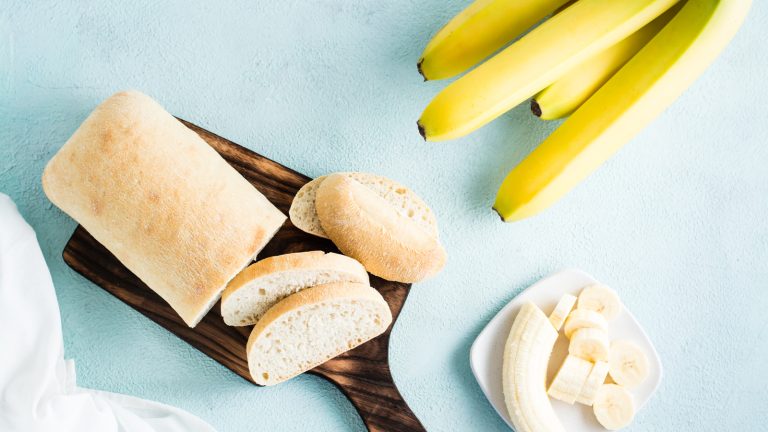We may receive a commission on purchases made from links.
Whether you’re trying to fix some kitchen design flaws before you sell your home or have been noticing too many signs that it’s time to remodel your kitchen, there’s a lot to think about. However, as homeowners focus their attention on countertops, cabinets, and appliances, there’s one key element that often gets overlooked: the kitchen sink.
While it may not be as immediately noticeable as some of the other components of a kitchen, it’s something that certainly deserves some of your attention. After all, think about how much time you spend at the sink, whether washing your hands, doing dishes, defrosting ingredients for recipes, straining pasta and veggies, and completing countless other tasks. The sink you choose must support everything you need to accomplish when working in the kitchen. There’s more that goes into picking out a kitchen sink than you might realize. Beyond the different sizes and material options out there, you also need to choose between different basin quantities and configurations, drain locations, depths, and so much more.
To help us lay out everything you should consider to make sure that the kitchen sink you choose ends up being the optimal fit for your needs and your kitchen’s layout and design, we reached out to four home improvement and design experts. Ron Shimek is the president of Mr. Handyman, a Neighborly company; Susan Serra is the president and a designer at Susan Serra Associates; Julianna Cementina is a product specialist at Native Trails; and Natalie Beech is the marketing manager and media lead at Greg’s Plumbing and Heating in Hamilton, Ontario.
Decide which material is best for your kitchen sink
Before you get too far into the search for a new sink, you should make a decision about your preferred material. As you probably know, there are several different options available, from ceramic to stainless steel, concrete, and several others, so you’ll have to weigh the pros and cons of each against your vision for the space — and the ease of cleaning (the sink is often one of the worst items to clean in a kitchen, so you don’t want to make your job any harder than it needs to be).
According to Susan Serra, “The choice of a material for your kitchen sink can be related to either the look a homeowner wants to achieve or to its function, and many sink materials offer both good looks and great function.” For those who are prioritizing function, both Serra and Natalie Beech suggest considering a stainless-steel sink. Beech explains, “It’s durable, easy to clean, and can handle everyday wear without showing it.” Ron Shimek echos this statement, noting that stainless steel is a popular, affordable option.
However, stainless steel might not be quite what you have in mind for your space. “If someone’s looking for something more high-end or custom, granite composite or fireclay are great options,” shares Beech. “However, they do typically come with a higher price tag and require a bit more care.”
Julianna Cementina offers two additional material options to consider: concrete and granite. She explains that concrete sinks are also very durable and able to resist scratches, chips, and stains well. Cementina also shares, “Copper is naturally antimicrobial and forms a beautiful patina over time.” Ultimately, you need to weigh your priorities and consider how you use your kitchen sink to help you make the best choice.
Pick a sink style that will work for your kitchen and lifestyle
As you begin your search for a new sink, you will notice that there are different styles, namely drop-in, undermount, and apron. Each will deliver a unique look to your space and impact its flow and functionality. Moreover, some styles are better suited to different countertop materials, so you will need to consider that, as well.
“A drop-in sink has a thin, finished rim all around the sink bowl, usually about an inch or less in width, that is quite literally dropped into the hole that is cut into the countertop,” explains Susan Serra. These styles are generally easier to install, especially in kitchens that have existing laminate countertops. Meanwhile, as their name implies, undermount sinks are mounted under the countertop. According to Natalie Beech, “Undermount sinks are great for people who want a seamless countertop look and easy cleanup. They’re best with solid surface counters like quartz or granite.”
If you are planning a more rustic or farmhouse design, then you might want to consider an apron sink. Julianna Cementina explains, “Apron-front sinks are technically undermounted, but part of the lower cabinet is cut out to expose and show off the front of the sink.”
If you are not doing a full kitchen remodel, then the best sink style will likely vary based on your existing countertops. Cementina also highlights the importance of noting how much lower cabinet space is available if you want to install an undermount or apron sink. “Measure to make sure you have enough room for an undermount kit that will support the weight of the sink, and also to ensure you have additional storage space if you planned to squeeze cleaners or other items in that cabinet under the sink,” she says.
Pay attention to the number of holes
When purchasing a new sink for your kitchen, you may see the options described as a 1-hole, 2-hole, 3-hole, or even 4-hole model. If you’re not familiar with plumbing or sink design, this may seem very confusing. Don’t sinks only have one hole for the drain (or two in the case of double sinks)? These numbers actually don’t have anything to do with the drain holes at the base of the sink. Instead, as Ron Shimek explains, “The number of holes depends on what fixtures, like faucet, sprayer, and soap dispenser, the homeowner is planning on having installed. The sink should match the fixture setup.”
Natalie Beech offers additional information to help you decide how many holes you should look for in the sink you choose. “A single-hole sink is usually for a faucet that has everything built in — spout and handle together. Two or three holes let you add things like a side sprayer, soap dispenser, or filtered water tap,” she explains.
Decide whether a double-basin or single-basin sink is best for your kitchen
Another important decision you will need to make before you can choose the best kitchen sink for your space is whether you want a single- or double-basin model. There are pros and cons associated with each option that you should weigh as you consider the size of your setup and what you’re looking to get out of the sink you purchase. “A single basin is great if you want a large, open space for pots, pans, or baking trays. It’s also easier to clean,” shares Natalie Beech. “If the kitchen is smaller or they rely on a dishwasher, a single basin often makes more sense.”
There are situations where a double-basin sink may be the optimal fit, as well. “If you’re someone who hosts a lot or prefers to handwash dishes, a double-basin sink is a great addition to the home,” Julianna Cementina explains. “One side can be specified with a garbage disposal and be a place to clear off dishes, whereas the other side can solely be for washing.”
If opting for a double basin, decide on the preferred ratio for each side
If you decide that a double-basin sink is best for your kitchen because you like the idea of having one side to use for clearing off dishes and disposing of waste and the other for handwashing them, then you will need to decide on how even (or not even) you want the two bowls to be. All of our experts recommend opting for an uneven split, with one basin being larger than the other. “In my experience as a designer, I’ve heard countless times that the double-basin sink (of equal bowls) is frustrating to use, as each bowl is too small to use to clean or work with larger items or a collection of smaller items,” says Susan Serra.
Natalie Beech recommends opting for a sink with a 60/40 split between the two basins. She explains that this configuration “gives you space to wash [on] one side while keeping the other free for prep or drying.” You’ll also appreciate having one larger side when you need to wash a large pot or frying pan — trying to do so in a small basin can be challenging and often sends water pouring out of the sink.
Don’t overlook the depth of each sink option
Did you know that not all kitchen sinks have the same depth? While some models may be only about 6 inches deep, others can be closer to a foot deep. According to Ron Shimek, the ideal depth “depends on what the homeowner is looking for and if they feel they need more space in the sink basin.” Susan Serra highlights some of the benefits of opting for a deeper sink. She says, “A sink, especially if it’s large, can be used to quickly hide cookware as guests arrive, especially if the kitchen is part of an open concept space. In that case, bigger is better. A serious cook may prefer deeper sinks while working with larger pots, strainers, and other cookware.”
However, a deep sink won’t be the right fit for everyone. As Natalie Beech explains, deeper sinks can put a strain on a user’s back. This will be even more true for people who are shorter in stature. She says, “Shallower sinks (around 7-8 inches) are easier to use ergonomically but won’t hold as much.”
Consider the overall design of your kitchen
There are many kitchen design mistakes that you want to avoid. Don’t make the mistake of choosing a sink that will undermine your design vision and goals. “It’s best to determine how you plan to use your kitchen before determining which sink will be the ultimate fit,” says Julianna Cementina. “For example, if you love to entertain, you may prefer a kitchen that has more countertop space, or even an island for prepping and serving.” For these instances, she mentions how an additional prep sink could be a real asset.
The style of the sink you choose can also add to or detract from the overall look you’re after. “Undermount and stainless-steel sinks offer a modern look and feel. Apron sinks can add a rustic feel,” explains Ron Shimek.
However, it is also important to make sure you don’t overlook functionality and choose something that is attractive but that simply won’t meet your needs. “If the sink doesn’t work for your lifestyle, it doesn’t matter how nice it looks,” says Natalie Beech. She recommends first identifying the ideal size, material, and layout. Then, she suggests considering other design elements to make that functional sink work in your kitchen design.
Take note of the kitchen sink’s drain location
One thing many people overlook when choosing a new sink is the location of the drain. Some models will have the drain hole centered, while it may be off to the right or left side on other sinks. Ron Shimek explains, “[The drain] location affects plumbing layout and space efficiency.” Indeed, according to Natalie Beech, while a center drain is the most common location, it can cause some storage issues. This is especially true if you have a garbage disposal connected to the drain, as it will be taking a huge chunk of space out of the center of the cabinet beneath the sink.
If you want to avoid this potential problem, consider a non-central location. Beech notes, “A rear or offset drain gives you more usable cabinet space underneath and helps with water flow if more than one person is using the sink.”
Measure for a perfect fit
The last thing you want is to purchase a sink only to realize that it won’t actually fit in the space that you have available. According to Julianna Cementina, “The general rule for installing a kitchen sink is to leave 3 inches of space on either side of your sink to allow room for the mounting hardware, so you will want a cabinet that is about 6 inches wider than the width of your sink.”
There are additional considerations to keep in mind if you currently have a drop-in sink and wish to replace it with an undermount or apron sink. Cementina says, “For undermount and drop-in style sinks, you’ll want to measure the widest part of the basin to ensure it’ll fit within the countertop space over the lower cabinet, whereas you’ll want to measure the countertop and lower cabinet for any apron-front installations.”
Because of these added complexities when switching sink styles (especially if you are not also replacing your countertops or cabinets), Natalie Beech shares, “… We strongly suggest getting a pro to double-check your measurements before ordering, especially since undermounts need countertop support.” If you’re planning a DIY kitchen remodel, you may be best off not trying to switch sink styles unless you are also installing new cabinets and countertops.
Susan Serra offers one more piece of advice related to measuring. She explains, “The fit also has to do with the type of faucet and faucet handles.” Pick out the faucet you wish to pair with the sink before you actually make a purchase. This will help you ensure that the faucet is not going to be too tall to fit under an existing cabinet or shelf and that the configuration of its handles will also work.
If possible, consider adding two faucets to your new sink
If you have a large kitchen, you’ll obviously have more space to work with. Opting for a sink that is 45 inches wide (or even larger, if the space allows) can pay dividends. Not only will you have more room to stack dirty dishes (or even hide them away when an unexpected company comes for a visit), but you may also be able to execute one of Susan Serra’s suggestions. “Larger sinks 45 inches-plus allow two faucets, a real game changer for those households with more than one person,” she says. “It can be very frustrating when one is working at the sink with the faucet and someone comes by and needs the faucet. Two faucets completely change those frustrating moments into happy interactions!”
Having a second faucet will also make it easier for family members to follow some of the food safety tips home cooks need to know. For example, if one person is doing dishes at the sink and the other has just finished cutting raw chicken, they will be able to step in and wash their hands without making the other stop what they are doing.
Don’t forget about the sink accessories and add-ons
There are several accessories and add-ons that you should also consider as you’re shopping for a new sink. Some of these accessories may come included with certain sinks, while others can be purchased separately. Ron Shimek says, “Homeowners can consider … adding a garbage disposal and hot water tap.” These can increase the functionality of the sink. For example, with hot water on demand, all of those pasta cooking hacks will be even easier to execute since you won’t need to wait very long for water to come to a boil on the stovetop.
“The first thing we always recommend is a high-quality drain strainer. It’s such a simple accessory, but it makes a huge difference,” notes Natalie Beech. She explains how a strainer can prevent future plumbing issues, such as clogged drains, by keeping all of those food scraps you should never put down the garbage disposal out of it.
Susan Serra also shares how sink accessories can enhance its functionality. She explains, “Some of the larger sinks 36 inches-plus will have a second ledge where accessories such as a cutting board, strainer, racks, and other pieces can slide back and forth in the sink as needed, suspended from the bottom of the sink.” Serra notes how such a setup can help keep the counters around the sink cleaner, too. You could even clear up additional countertop space by opting for a built-in soap dispenser.
Dot your i’s and cross your t’s before making a purchase
As a final word of advice, Ron Shimek and Natalie Beech both caution against making a rushed decision and opting for a sink that won’t work for your space. Shimek says, “Always check for compatibility before purchasing. Ensure the faucet will have clearance. Ensure you have professional installation to ensure everything is connected properly and will function as needed.”
Beyond the physical fit of the sink itself, Beech suggests taking a broader view. She says, “A sink isn’t something you want to replace twice. Think about how your kitchen functions, who’s using it, and what will still feel like a smart choice five or 10 years from now.” Instead of choosing something only because it is trendy, she recommends letting practicality and durability guide your search. In a few years, you don’t want to look back at the decision you made and wish you had chosen something different.





